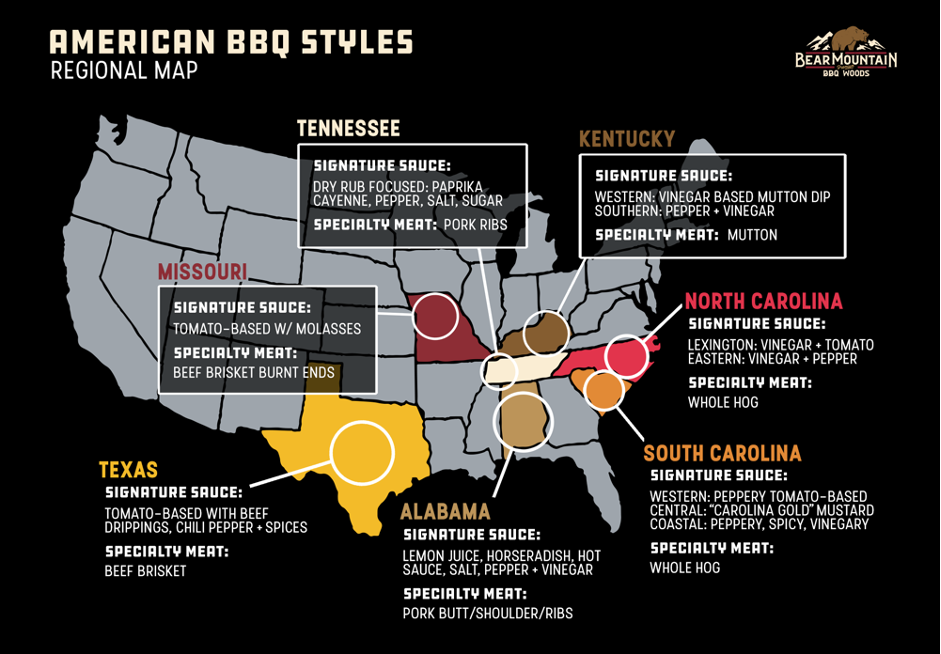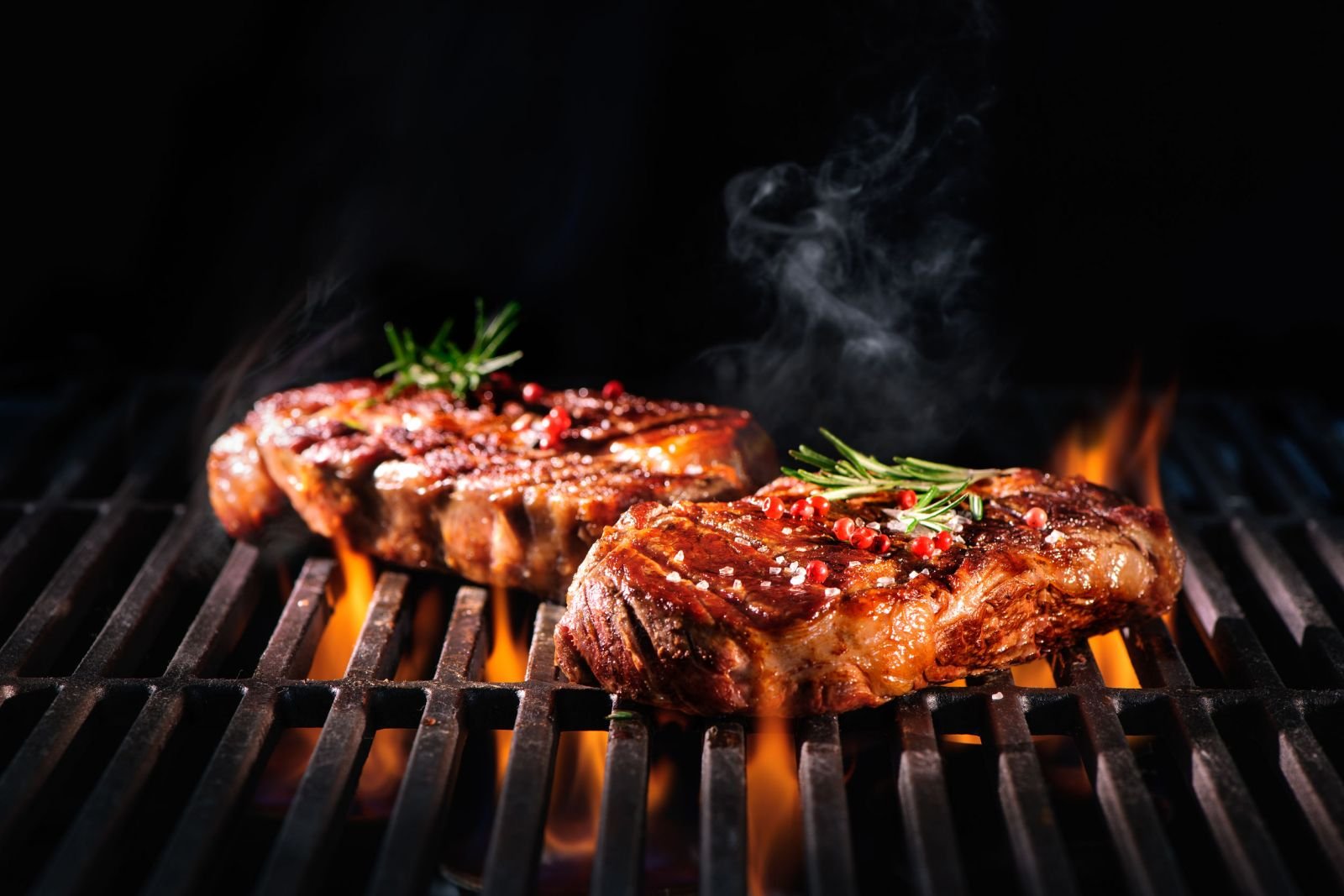History of Regional Barbecues in America
The American BBQ tradition owes its origins to the fusion of many cultural food traditions, including African and Caribbean. At its earliest origins, barbecue involved slow-cooking meat over sticks and saplings, a common activity among indigenous Americans and Caribbeans.
However barbecues the way that Americans know them now meat cooked over a grill or pit, covered in spices and basting sauce originated in the Caribbean. The word barbecue comes from the language of a Caribbean Indian tribe called the Taino.
A traditional American barbecue usually includes side dishes like potato salad, cole slaw, baked beans or macaroni and cheese. The original styles of barbecue are thought to be those that originated in the easternmost colonies, like the vinegar-based “whole hog” barbecue found in Virginia and North Carolina.
To trace the history of American barbecue will be different because there are so many stories around the topic but yet the way of cooking on a grill and pit is enjoyed throughout the country and especially on the 4th of July.
Here are some regional barbecues which are enjoyed and famous among Americans
Regional Barbeques in America
Carolinas
A traditional southern United States barbeque meal of pulled pork, brisket, macaroni and cheese, roasted corn, and Texas toast
Throughout the Carolinas, barbecue is exclusively defined as being pork. Pork can be either prepared as the whole animal (Whole Hog) or prepared by the individual cut, typically the shoulder. Meat is served pulled, shredded, chopped, and occasionally sliced. It is cooked with hardwood and/or hardwood charcoal. It is served with a vinegar-based sauce for dipping.
Sauces used to ‘mop’ meat while cooking varies dramatically from Western North Carolina through the East and South Carolina. Although mustard is commonly associated with South Carolina barbecue, its application in barbecue cooking can be seen throughout the United States wherever German immigrants settled.
The use of mustard or tomato varies drastically throughout the Carolinas, although mustard based is more common in South Carolina and eastern North Carolina, and vinegar and ketchup-based (Lexington style) are more common in central and western North Carolina.
Carolina hog-based barbecue is considered the major starting point for the American barbecue diaspora.

Kansas City
Barbecue was brought to Kansas City, Missouri by Memphian Henry Perry. Despite these origins, the Kansas City style is characterized by a wide variety of meat, including beef, pork, and lamb. A strong emphasis on the sauce and including french fries as a side dish.
Kansas City barbecue is rubbed with spices, slow-smoked over a variety of woods and served with a thick tomato-based barbecue sauce, which is an integral part of KC-style barbecue.
Memphis
Memphis barbecue is primarily two different dishes: ribs, which come “wet” or “dry”, and barbecue sandwiches. Wet ribs are brushed with sauce before and after cooking, and dry ribs are seasoned with a dry rub. Barbecue sandwiches in Memphis are typically pulled pork (that is shredded by hand and not chopped with a blade) served on a simple bun and topped with barbecue sauce, and coleslaw.
Of note is the willingness of Memphians to put this pulled pork on many non-traditional dishes, creating such dishes as barbecue salad, barbecue spaghetti, barbecue pizza, or barbecue nachos.
Texas
There are four familiar regional barbecues in Texas, America:
East Texas style – essentially Southern barbecue, found in many urban areas
Central Texas – also known as meat market style, which originated in the butcher shops of German and Czech immigrants to the region
West Texas “cowboy style”—involving direct cooking over mesquite and using goat and mutton as well as beef
South Texas barbacoa—in which the head of a cow is cooked (originally underground) now in a smoker.
Alabama
Alabama is known for its smoked chicken which is traditionally served with Alabama white sauce, a mayonnaise-based sauce including vinegar, black pepper, and other spices. The sauce was created by Bob Gibson in Decatur, Alabama during the 1920s and served at the restaurant bearing his name, Big Bob Gibson’s Barbecue. Chicken is first smoked in the pit and then coated or dunked in the white sauce. The sauce is also served at the table where it is eaten with a variety of other foods.

California’s Barbeque
The original use of buried cooking in barbecue pits in North America was done by the Native Americans for thousands of years, including by the tribes of California. In the late 18th and early 19th centuries, when the territory became Spanish Las Californias and then Mexican Alta California, the Missions and ranchos of California had large cattle herds for hides and tallow use and export.
At the end of the culling and leather tanning season, large pit barbecues cooked the remaining meat. In the early days of California statehood after 1850, the Californios continued the outdoor cooking tradition for fiestas.
In California, the Santa Maria-style barbecue, which originated in the Central Coast region, is best known for its tri-tip beef rump, sometimes cut into steaks, which is grilled over a pit of red oak, and simply seasoned with salt and garlic. Versions made in towed trailers are frequently seen at farmer’s markets. It is often served with pinto beans, pico de gallo salsa, and tortillas.
Hawaiian Style
The cooking customs of the indigenous peoples of Polynesia became the traditional Hawaiian luau of the Native Hawaiians. It was brought to international attention by 20th-century tourism to the islands.
The Korean immigrant community heavily influenced the development of the Hawaiian barbecue tradition. Serving barbecued meat, slathered in sweet garlic teriyaki sauce, over bowls of steamed vegetables and rice is common in both Hawaiian and Korean barbecue cuisines. Interpretations of bulgogi and bibimbap, recreated with local Hawaiian ingredients like pineapple and spam, can be found in many Hawaiian barbecue menus.
St. Louis Style
A staple of barbecuing in St. Louis is the pork steak, which is sliced from the shoulder of the pig. Although now considered a part of the Midwest, Missouri was originally settled primarily by Southerners from Kentucky, Virginia, and Tennessee.
These original settlers brought a strong barbecue tradition and even though successive waves of later, primarily German and Scandinavian, immigration obscured much of the state’s Southern roots, the Southern influences persisted, especially throughout the Little Dixie enclave of central Missouri (connecting the Kansas City and St. Louis barbecue traditions).
St. Louis-style barbecue sauce is characterized by its mildly sweet, tart, and spicy taste and tomato base. Unlike most other prominent barbecue sauces, the St. Louis style variety doesn’t contain liquid smoke.





